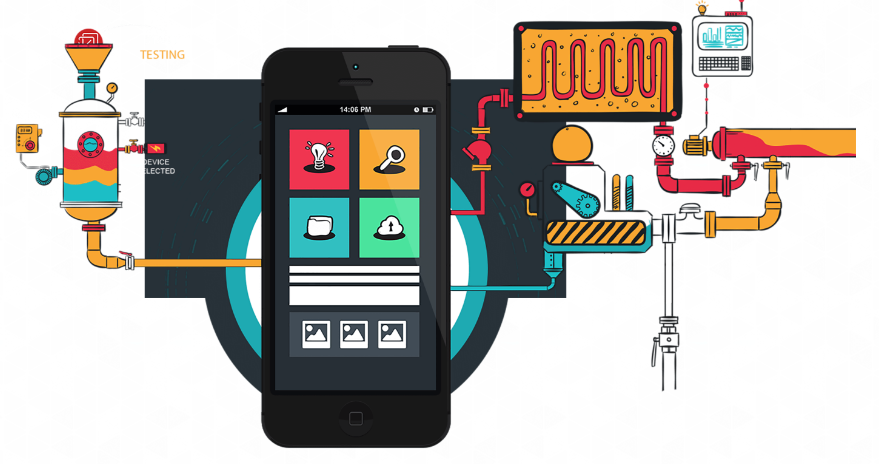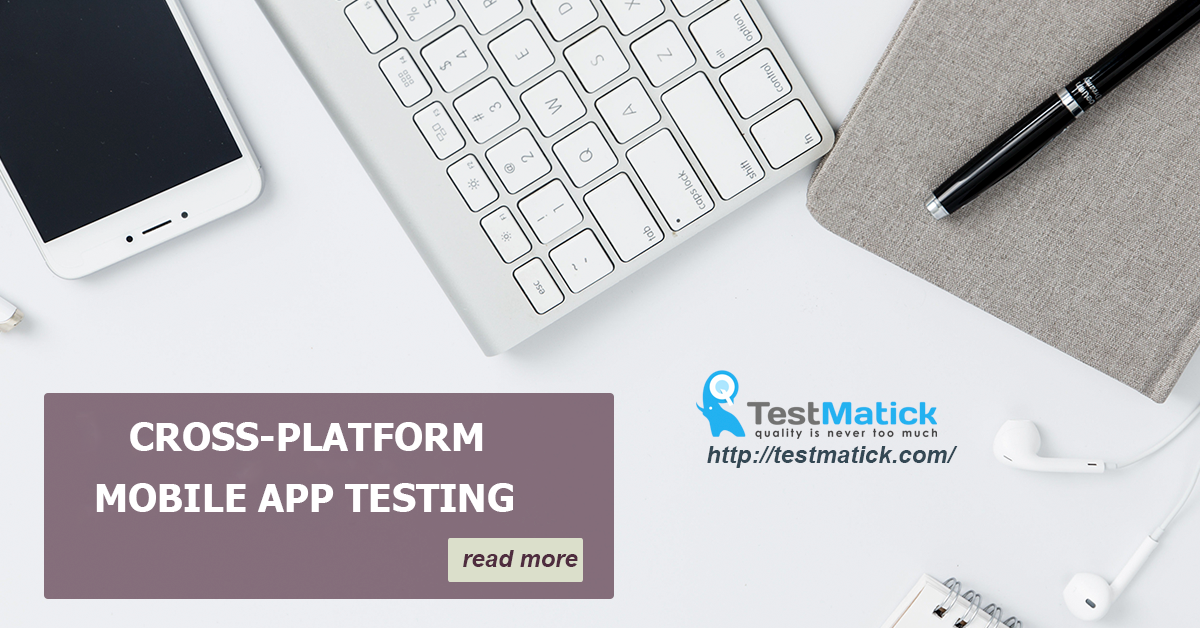There are many reasons why a mobile application under development becomes successful and popular: original idea of a client, good development, perfect management of every stage of development, well-made promotion, etc.
But testing of a product both in the early stage and an at the end of a final sprint is also an important factor for a successful release.
No matter how hard developers, managers or marketing specialists try, all structure and work can collapse without proper quality assurance.
In the next chapters, we will thoroughly analyze a testing process of cross-platform mobile applications, highlighting peculiarities of such process and tools used for this.

Cross-platform Mobile Apps
Stages of Testing the Mobile Utility
Compatibility Testing
So, let’s start.
What does a client of a mobile application do first of all? Right: he or she installs it on his or her device.
It’s the first stage of testing. QA, who is responsible for this, should thoroughly check that a user doesn’t have difficulties and doesn’t suffer in the process of a program installation (it does not “freeze” in the process of downloading from a cloud, an installation process is not slow, unknown forms, buttons, etc. do not pop up).
Right on this stage, you should exactly decide whether an application will be cross-platform and available for numerous OS.
If yes, then you should test every popular mobile OS.
Testing an Application on Various Android OS
- In the process of installation, apk installation file is completely aligned to the program’s policies which are requirements and a list of forbidden types of materials which can’t be published: forbidden content, spam, malware, personal information;
- In the process of the reinstalling a new version, a build numeration is made in an established order (for example, version 2.2.1 of utility must not follow version 2.0);
- QA can check this application for complete compliance with the requirements of User Interface Guidelines.
Testing the Applications on Different Versions of OS and iOS
- The tested application must pass the moderation in the App Store for the uniqueness of the name and completely meet Human Interface Guidelines;
- We should check whether a category of an application is properly mentioned and whether it has a link for a feedback from developers of utility.
After that, you should check complete compatibility of the application with real devices on various operating systems:
- Whether RAM have enough memory of the device for installing the application;
- Whether it has enough disk space for a proper work of application;
- Whether the type of the processor and OS is suitable for such an application.
Stress Testing
At this stage of testing, you should test a work of application in so-called “stress conditions”. It can be both internal and external factors:
- Internal factors: a small size of the external battery, disabling some parameters (for example, GPS), lack of disk space, problems with RAM;
- External factors: the quality of network connection, variations of switching between wi-fi and 3g/4g, message delivery, conversations, the functioning of some peripheral devices (external headset), change of Sim cards, usage of microSD, usage of the phone in a sleep mode, ambient temperature.
Load Testing
At this stage, testers can thoroughly study the technical weaknesses of an application. For example, a memory leakage or problems with the performance.
Such tests are usually performed with the help of “weak” mobile devices which don’t have a large size of RAM.
Recovery Testing
Such type of testing helps to define whether tested cross-platform application can be recovered after possible breakdowns which were caused by particular software errors, breakdowns in the process of work of mobile device or problems with the connection:
- You should check if there is a possibility to recover an application after happened emergencies;
- A possibility to transfer data after a signal breakdown;
- Check a possibility of application to perform programmed user actions in case of breakdown of battery supply or not the proper closure of the utility.

Recovery Testing
Localization Testing
Localization testing allows QA to test the adaptability of mobile utility for a particular target audience in complete accordance with its cultural peculiarities and customs:
- Define languages which must be supported by an application;
- Check if a translation of text blocks is correct;
- Check date formats;
- Check whether a delimiter between the numbers is correctly placed.
Usability Testing
Now it’s a turn to test the usability of the mobile application.
What is the sense of usability? The answer is simple: to completely simplify the interaction between a user and an application, adapt to the utility to established requirements of a client and increase a popularity of a product with the following increase of user conversion.
At the stage of usability testing, a tester should find errors in navigation and other bugs which are an integral feature of program functionality.
They can be:
- Structural elements of graphical interface;
- Size of information;
- The speed of interaction between graphical elements;
- Suggested colors, etc.
Automated Testing
In our age of digital revolution, it’s the automation that is a key which can help to reach good results in the process of testing the mobile application. It helps to decrease the time and increase the efficiency of work.
But automated testing is not cheap.
So you should use it only in the following cases:
- Mobile application completely meets its established requirements;
- The cycle of a roll-out of the application is short;
- The functionality of the application is permanently increasing.
Checking the changes
Finally, you met all the above-mentioned requirements and found a particular number of bugs. It means that particular changes were made to a program code of your mobile application.
Now it’s important to be sure that developers have really fixed all errors found by a tester (such a process is called re-testing or approval testing). In other words, all performed test cases are executed one more time. And in this case, they must be performed without errors.
Check whether changes made have not influenced the work of the application and there are no bugs – regression testing.
Beta Testing
As a result, we have got an advance variation of the final release of mobile utility. It would be good to test the stability and functionality of a program from potential clients’ point of view.
The process of beta testing is a stage of debugging and testing a beta build of the application. Its main target is to define a maximum number of bugs for their future “destruction” before a final release of the product.
Before performing beta testing, you should take the following factors into account:
- A number of members of testing;
- Time which will be spent on testing;
- Demographic coverage;
- Price of testing.
Even after investing some amount of money in such a process, it may become a good investment in the checked quality of your mobile utility.

Beta testing
Advice for Testing Cross-Platform Mobile Application
To completely quickly and qualitatively test a work of any mobile application, you should take particular rules, which make such work easier, into account, such as:
- Completely thoroughly study the utility with which you will work;
- Never forget about the differences between desktop and mobile applications;
- Take the peculiarities of OS and technical peculiarities of a device into account;
- Use real devices to test a program functionality;
- Don’t try to find “Swiss knife” for tests. Use only such tools which you are familiar with;
- Don’t ignore the possibilities of mobile testing;
- Perform work with the help of technical tables, screenshots, video recording;
- Use emulators and special simulators;
- Don’t automate all the work;
- Trust beta testing;
- Take the realities of the human factor into account.
Conclusions
If you wish your application will become popular, don’t ignore testing.
Only thorough testing will allow you to find a source of bugs and made the process of development correct.
Right with the help of professional testing you can increase the performance of the application, increasing chances of a product for a complete user conversion.
Apply comprehensive approach, which is actually the most efficient way to turn your testing of mobile products into an efficient and flexible activity which delivers its good results!










Leave A Comment